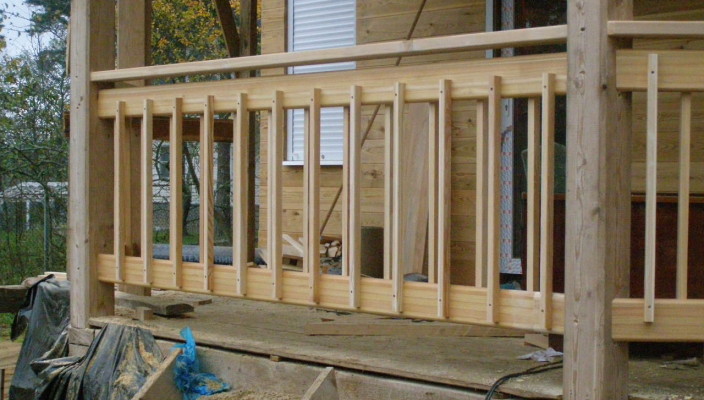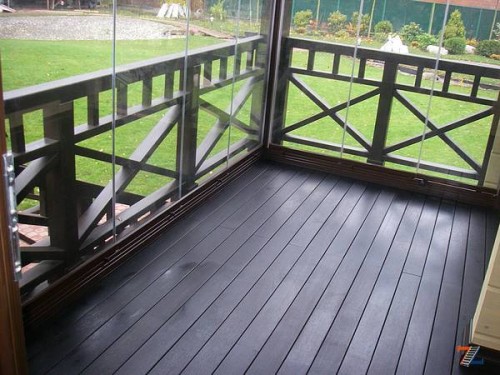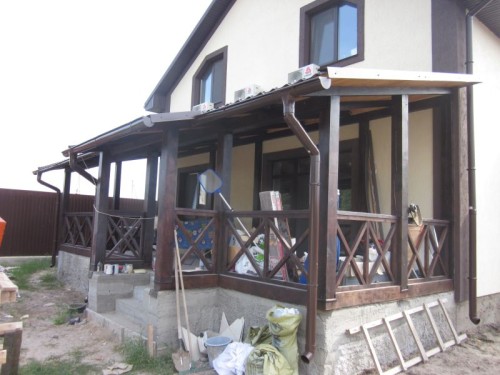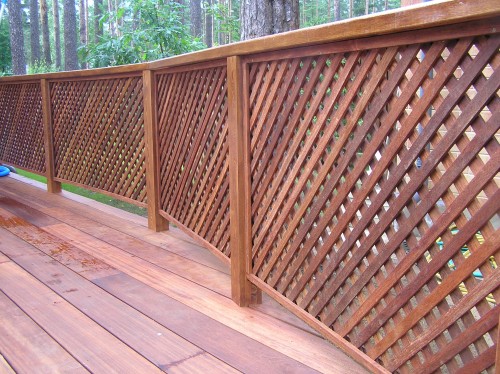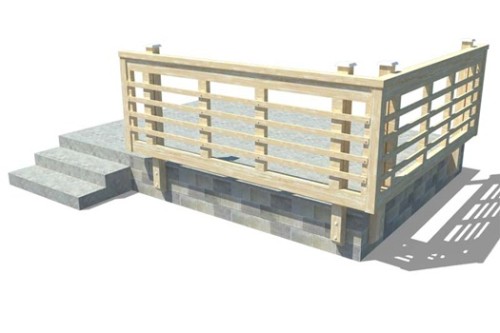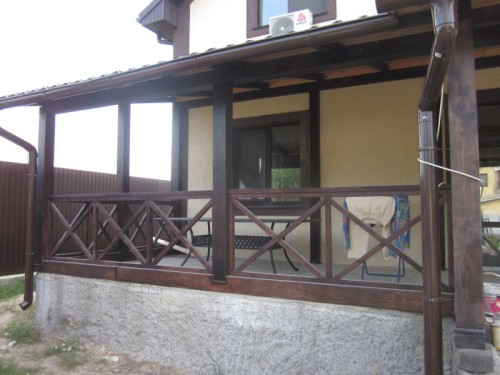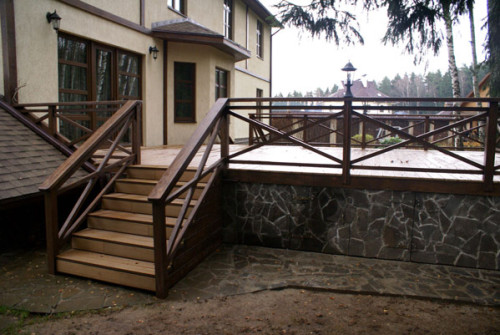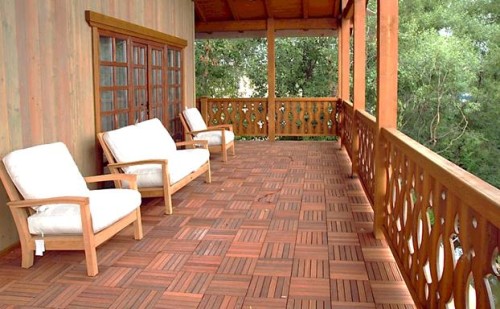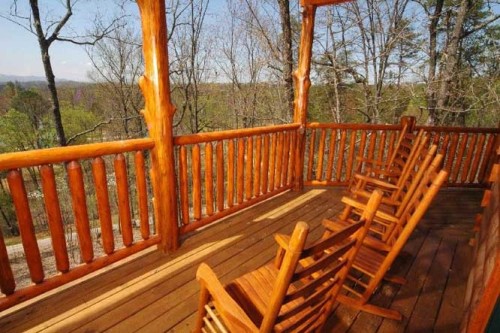Country house is associated not only with painstaking labor on the site, but also with recreation periods. Of course, everyone wants to sit on a cozy veranda, hiding from the hot sun or a heavy rain to admire the nature, spend time with family or friends. Therefore, the arrangement of this extension to the house should be carried out with inspiration and warmth, so that in the end it had an attractive appearance, and here it was cozy. Veranda is often different from another only the specifics of the design, where fences are played by the latter role. They perform not only aesthetic, but also practical, as well as a protective function. For example, you have small children in your family, and they need to save them from falling from a height. Next, we will tell how to make wooden fences for the veranda.
Content
Characteristics Fences for veranda
As mentioned above, the fences perform two important features:
- Aesthetic. Are the final stroke in the arrangement of the decor of the construction. Due to the fact that the tree is very easy to succumb to any type of treatment, from it you can create truly impressive designs that have a special and unique form.
- Protective. The fence around the perimeter veranda serves as protection from falling people living in a country house.
There are several types of fences for the veranda. Consider each of them in more detail.
In the form of manufacture are:
- Closed type. Perform a protective function, remove from wind, precipitation.
- Open type. In most, such fences are performed only aesthetic, decorative function.
Depending on the material from which these structural elements are made, distinguish:
- Fencing from the wood composite. This material refers to the discharge of synthetic. It has good strength, deformation resistant under the influence of temperature differences and high humidity. Most often has a white color or "under the tree". Today, such fences are very popular with country house owners, as they have an acceptable price.
- Polyvinyl chloride fences. Such structures are rather fragile. Therefore, consumers are not popular. However, sometimes they are used to install fences that perform a purely decorative function.
- Forged art fences. They have a very attractive appearance and bizarre form. However, the price of fences for a veranda of this type is quite high. In addition, artistic forging must be made masterfully and elegantly, in order to prevent additional load on the foundation of the veranda.
- Metal fences. Due to the fact that such structures are quite cumbersome and heavy, they are used very rarely. Especially use the fences of the combined type, where the metal is combined with other materials.
- Glass fences. For their manufacture, laminated and red glass is used. Create visually to increase the area of \u200b\u200bthe veranda. However, rather fragile and have a high cost.
- Stone fences. They are very bulky and volumetric. Therefore, they need a fairly solid foundation for their installation.
- Wooden fences for the veranda. Such structures are given to increasingly preference, as the tree is quite a fatty material from which you can make fencing of any form. However, for such decorative elements, careful care is needed, as the tree under the influence of moisture can swell and lose their attractiveness.
In view of the manufacture of fences come:
- Horizontal. Horizontal crossbars between several durable supports.
- Vertical. As can be seen from the name, such fences are arranged vertically.
- Cross (or combined). Such crossbars are located cross on the cross in relation to one to another.
By type and form:
- Straight.
- Curvilinear.
- Curved.
Advantages of fencing veranda of wood:
- Purify the veranda of styles and uniqueness.
- Can be manufactured by any kind and form.
- Complement the interior of a wooden building.
- Durable, reliable.
- Eco-friendly.
- Aesthetically attractive.
- Simple in installation.
Disadvantages:
- Pretty sensitive to temperature fluctuations and humidity. Therefore, they are treated with special protective compositions.
- We need systematic care.
- Have a fairly high price.
Fences for the veranda do it yourself
Selection of material
From how correctly the type of wood is selected for the manufacture of fences, the strength, reliability and durability of the entire design depends. Let's deal with this issue more.
The following options for the manufacture of fences for the veranda are available:
- Ash. An array of such a tree has a rather dense structure, so it is often used for the manufacture of furniture frames and other interior items. However, due to the special sensitivity of this type of wood, it is not necessary to apply for the manufacture of fences in regions with high humidity or where there are sharp temperature differences (too cold winters and hot summer).
- Oak. Noble tree breed. However, still inferior in the density of the ash. But unlike him, there has no problems with the environment and tolerates well as high humidity and temperature fluctuations. It can be said is a universal building material. Often, the construction is used by the boring oak. This is a rather reliable wood that has been treated in an aquatic environment. Great for the manufacture of fences for the veranda and terrace. However, given the dense structure of the moraine oak, it will be quite difficult to treat its own forces.
- Pine, Birch, Lipa. These are materials that belong to the category of "budget options". For the construction of fences for the veranda, it is not worth using them, as they are very sensitive to changes in weather conditions, as well as rather fragile. Products made from materials of this variety, over time can lose its shape, deform, dismiss. There are certain protective compounds that can "extend the life" of fences from this type of wood.
- Siberian larch. Pretty high-quality and durable type of wood. Larch is resistant to changes in temperature regime and precipitation. In the wood mass of this type there are natural resins that are natural protection against pest exposure, rotting either fungus. Therefore, larch can not even handle various protective compositions. By density, this wood is inferior to oak and ash.
Choosing a protective composition
To increase the strength and reliability of the design, wood should be treated with protective compositions. These include:
- Antiseptics - solutions capable of protecting the woody array from the harmful effects of pests, fungi and other microorganisms. In addition, components that can protect wood from precipitation and high humidity are added to the composition of such funds.
- Nonpires - solutions that can protect wood from fire. Due to the substances that are in such funds, the tree is not flammable when heated.
Order of installation work
Phased instructions:
- Initially, the type of fences should be determined. Depending on this, perform all the necessary measurements. Set all the parameters of the future design - height, width and length.
- Given the data obtained during the measurements, proceed directly to the manufacture of wooden fences. First of all, supports are installed. Their sizes are selected depending on the dimensions of the veranda. So, for large attacks, strong, reliable, massive supports are installed. They should perfectly provide the rigidity of the whole design. After all, the safety of all residents of the country house depends on this.
- Cut the bars to get the supports of the desired size. If you want them to have a decorative shape, you can handle products on the lathe.
- Install the supports. Note that the distance between them should not be more than 110 cm. This parameter depends on the size of the veranda and the type of fencing. In order to correctly perform installation, make a markup around the perimeter of the veranda. So, there are places where the reference pillars will be installed. Then, on the marks and is carried out.
- After the supports are mounted, you need to fix them. For this, large screws are suitable. They can be screwed directly to the support itself, and then to the place where it will be installed.
- Next, check the correctness and verticality of the design. In addition, we check how firmly supports are installed.
- Then you should install the handrails. They are similarly attached with screws.
- Next, check the correct installation of the handrail with the help of a construction level. If you find any deviations, you should immediately fix them.
- After that we strengthen the entire design with additional rigids. They are installed in those places that will experience the greatest load during the operation of the veranda. Stiffeners in our case are small wooden racks. Often they are installed in zones that do not interfere with the free movement of residents at home.
- Next, decorative inserts and other elements of the fence decoration are installed. For perforated designs, fasten the perforated elements on the available wooden frame.
- The final stroke will be wood processing with protective compositions and the coating of the veneer to give an attractive shade.

